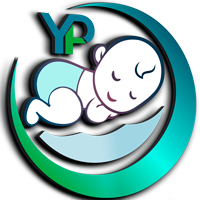
The irony of alcohol is that we often drink to feel relaxed, to tamp down anxiety. But over time, White says, this can lead to escalating levels of anxiety. “You might drink at night to reduce your anxiety. And then, as a result, the next evening, you feel more anxiety, which then motivates you to drink again,” White says.
11 ways to curb your drinking
Symptoms can range from headache, elevated blood pressure, heart palpitations, and nausea and vomiting to tremors, hallucination and in severe cases death. Taking a break from alcohol for 90 days is an excellent way to reset your body and mind. This article explores the physical, mental, and emotional benefits of a 90-day alcohol break and how it can help you reevaluate your relationship with drinking. If you’re just getting started, consider starting with our 30-day alcohol free guide.

Symptoms and Causes
For example, patients of all ages who come to us drinking heavily have exceedingly high blood pressure. Even if they’re on a detox plan with taking a break from alcohol a significant amount of tranquilizers, their levels can be up to 170. Giving up alcohol can bring these levels down within a few weeks.
Medications to Ease Withdrawal Symptoms
It’s common to have a difficult time when making big changes, but good self-care practices can help you manage overwhelming feelings and take care of your mind and body. Think about what’s motivating you to take a break from alcohol. Rachel Kazez, a licensed clinical social worker and therapist with All Along, says to begin with some basic questions to get a little perspective. According to the Dietary Guidelines for Americans, alcohol should be consumed in moderation — up to one drink per day for women and up to two drinks per day for men. “There are people who have learned to practice very reasonable alcohol consumption that contributes to psychosocial well-being in a way that does not impair their health,” Kumar noted.

If you’re experiencing severe symptoms of alcohol withdrawal, be sure to talk to a healthcare provider. Your primary care provider can advise you on where to seek care for the physical and mental symptoms of alcohol withdrawal. It’s very important to seek help if you struggle with alcohol use disorder.
So, now is as good a time as any to try the sober-curious lifestyle. The communal aspect of the Dry January challenge might make it easier, too, particularly if you have friends or family members who want to join you in abstaining from alcohol for 31 days. The dry month is also an opportune time to examine your relationship with alcohol and decide if you might want to change your drinking habits to improve your health. These include tips for cutting down or quitting, reminder strategies to help you remember why and how you decided to do it, and ways your family and friends can support you. All these strategies can help you stay motivated in your efforts to take a break from alcohol.
- Getting to the end of a month without alcohol is a huge accomplishment.
- As the week progresses, you usually have more energy because your liver is not struggling to recover every single day.
- Meanwhile, the brain is producing more and more neurotransmitters, making a person further imbalanced.
- Even if they’re on a detox plan with a significant amount of tranquilizers, their levels can be up to 170.
Bariatric surgery, weight-loss medication, or both? Navigating your options
Consuming more than that can lead to liver damage and heart disease, and increase your risk for some cancers. Your body has acclimated to quitting drinking over the past couple of years. If you do want an evening drink, good sleep hygiene dictates you avoid alcohol three hours before bedtime. Low-risk https://ecosoberhouse.com/ drinking is defined as having no more than one drink a day for women and no more than two a day for men – a difference due to general weight and size. High-risk drinking is more than three drinks a day for women and four a day for men, and this is considered higher risk for alcohol use disorder (AUD).
If you drink excessively, seek medical help to plan a safe recovery as sudden abstinence can be life threatening. NIAAA’s Rethinking Drinking can help you assess your drinking habits and provides information to help you cut back or stop drinking. It’s always a good idea to periodically examine your relationship with alcohol. A popular way to do this is to participate in a sober month like Dry January or Sober October, which are health and wellness trends that emphasizes taking a break from alcohol for an entire month.

How to Stop Drinking: Making a Plan That Works for You
Heavy drinkers usually have tell-tale signs; they often look red-faced or puffy with bags under their eyes. Whether it’s enjoying a glass of wine with dinner or having a few drinks on the weekend, alcohol can easily become ingrained in your lifestyle. A 90-day break from alcohol offers the opportunity to step back and break the cycle of habitual drinking.
Improved Mood
Becoming more aware of your alcohol triggers and reasons for drinking can help you plan ways to help manage the urge to drink. Maybe you don’t think you depend on alcohol exactly, but you still wonder whether you might be drinking too much. From month-long sobriety challenges to the Sober Curious movement, more and more people are taking a closer look at the role alcohol plays in their lives. “The alcohol was certainly a numbing agent,” listener Mark Vowers told us. Vowers says not drinking makes him feel more present — more grounded. These withdrawal symptoms occur because of overactivity of the central and autonomic nervous systems.

